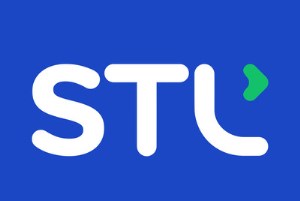STL, a global data network solutions company, unveiled its programmable FTTx (pFTTx) solution for fiber-based access connectivity at ONF (Open Networking Foundation) Connect 2019 held at Santa Clara, California.
With the pFTTx announcement, STL becomes one of very few companies in the world to have a software-defined network (SDN) solution for access connectivity. Built on ONF’s open reference design called SEBA (Software-defined networks Enabled Broadband Access), STL has developed the pFTTx solution in partnership with ONF, other open communities, and open network hardware partner Edgecore Networks.
Programmability makes SDNs the future of networking. By enabling programmability at the core of the network and decoupling white-box hardware from software, SDNs bring more flexibility, cost efficiency and service excellence to data networks. In an industry weighed by legacy monolithic systems and infrastructure, and long periods of vendor lock-in, STL is driving break-through disruption with programmable, open networks.
Announcing the pFTTx solution at the conference, Guru Parulkar, executive director, ONF, said “STL’s disruptive pFTTx comes at a time when communication service providers will greatly benefit from agility, faster time to market, lower cost and enhanced customer experience.” He added, “We are delighted to have STL as an active member of the open-source community, productising and commercialising open platforms such as VOLTHA (Virtual OLT Hardware Abstraction), ONOS (Open Network Operating System) and SEBA.”
“We are excited to partner with STL and the community. Software-defined solutions such as pFTTx will reduce hardware and software costs with open network hardware at the edge, providing greater agility for innovation, and free providers from vendor lock-in,” said George Tchaparian, president and CEO, Edgecore Networks.
“At its core, STL’s pFTTx is built on disruptive SDN and Network Function Virtualisation (NFV) technologies. It will convert existing FTTx networks to programmable FTTx, thereby providing radical flexibility to service providers’ business models,” said Ayush Sharma, head of Programmable Networking and Intelligence, STL.
The hyper-scale networks of tomorrow are unlike the traditional ones. They are denser, deeply fiberised and software-defined with computing at the edge. STL is the only company in the world to have unique capabilities across all layers of the network: From photonics and material science-based precision manufacturing to algorithmic design of the last mile, ultra-fast infrastructure deployment, AI/analytics and programmable networks. This strategically positions STL to lead network disruption.
Comment on this article below or via Twitter: @VanillaPlus OR @jcvplus






